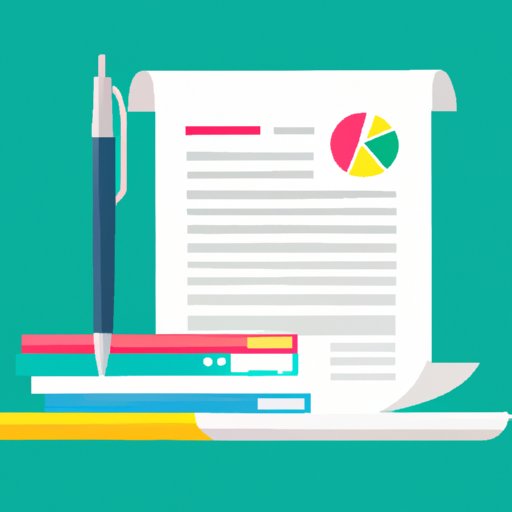
How to Write a Report: A Comprehensive Guide
Reports are a common form of academic and professional writing, and knowing how to write an effective report is an important skill to have. Whether you’re a student or working professional, this guide will provide you with all the information you need to know to create a well-written and thoughtful report.
I. Introduction
A. Definition of report writing
A report is a type of document that provides information and analysis on a particular topic or issue. Reports can be written for a variety of purposes, such as to inform, persuade, or recommend actions to be taken.
B. Purpose of report writing
The purpose of report writing is to communicate information in a clear and concise way. Reports are used to inform decision-makers, stakeholders, or the public about a topic or issue. Reports can also be used to present the findings of research or to analyze data.
C. Report structure
Reports generally follow a specific structure, which includes an introduction, body, and conclusion. The introduction provides an overview of the topic, the body presents the information and analysis, and the conclusion summarizes the findings and provides recommendations or conclusions.
II. Identify the Type of Report and Its Audience
A. Different types of reports
Before you start writing your report, it’s important to identify the type of report you’re writing. There are several common types of reports, including:
- Research reports
- Feasibility reports
- Technical reports
- Progress reports
- Annual reports
B. Identifying your target audience
Once you’ve identified the type of report you’re writing, it’s important to consider the audience who will be reading it. This will help you determine the tone, language, and level of detail that is appropriate for your report.
III. Research and Data Gathering
A. How to research for a report
Research is a crucial component of any report. Before you begin writing, you should conduct thorough research on your topic. This may involve reviewing existing literature, conducting surveys or interviews, or analyzing data.
B. Data gathering techniques
There are several techniques that can be used to gather data for a report, including:
- Interviews
- Surveys
- Observation
- Document analysis
- Case studies
IV. Organization of Content
A. Setting up a logical and clear outline
Organization is key to writing a successful report. Before you start writing, create an outline that clearly and logically presents your information. This will help ensure that your report is well-structured and easy to follow.
B. Proper formatting and sectioning
Proper formatting and sectioning can also help make your report easier to read. Use headings and subheadings to break up the report into sections, and use bullet points or numbered lists to highlight important information.
V. Grammar, Spelling, and Punctuation
A. Importance of language correctness and clarity
It’s important to make sure your writing is clear, concise, and grammatically correct. Poor grammar, spelling, and punctuation can detract from the credibility of your report and make it difficult to read.
B. Common errors to avoid
Some common errors to avoid include:
- Misusing apostrophes
- Confusing homophones (e.g. there, their, they’re)
- Using passive voice
- Using jargon or technical terms without defining them
VI. Writing Tips and Techniques
A. Making your report concise and focused
A good report is concise and focused. Avoid including irrelevant information and be sure to stay on topic. Use clear language and avoid using complex jargon or technical terms without defining them.
B. Telling a story with your data
Data can be more engaging and memorable when presented in the form of a story. Use examples and anecdotes to help illustrate your points and make your report more relatable.
C. Using visuals to support your message
Visuals, such as graphs, charts, and images, can be a powerful tool to support your message. Use them sparingly and be sure they are relevant to the information you are presenting.
VII. Conclusion
A. Review of key takeaways
Writing a report requires careful planning and organization. Before you start writing, identify the type of report you will be writing and the target audience. Conduct thorough research and gather data using a variety of techniques. To ensure your report is clear and concise, pay attention to grammar, spelling, and punctuation. Use techniques such as storytelling and visual aids to engage your readers and support your message.
B. Closing statements
Remember that a well-written report can be an effective tool to inform and persuade. With these tips and techniques, you can create a report that is both informative and engaging.
C. Recommended next steps
If you’re looking for additional guidance on report writing, consider taking a writing course or seeking feedback from a writing expert.





